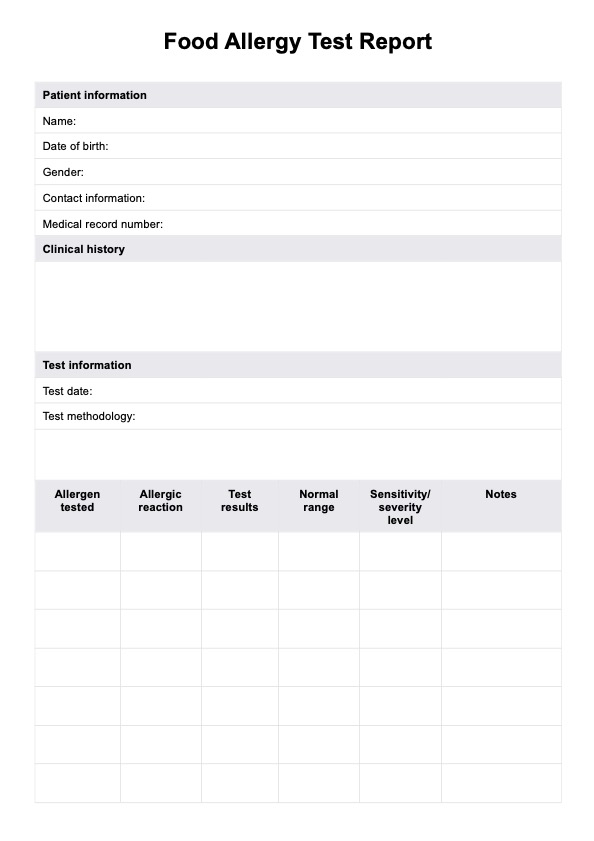Food allergy tests are typically requested by patients who have experienced adverse reactions to certain foods or have a family history of food allergies. Healthcare professionals may also ask them as part of an initial assessment or follow-up for patients with suspected food allergies.

Food Allergy Test Reports
Food allergy tests help identify which foods trigger an allergic reaction. Download a Food Allergy Test Report to organize and record patient results.
Food Allergy Test Reports Template
Commonly asked questions
The frequency of food allergy testing depends on individual circumstances. It may be recommended for individuals who have experienced severe or life-threatening reactions to certain foods and those with a family history of food allergies.
Food allergy tests are used when there is a suspicion of food allergies and for follow-up and monitoring purposes. They can also identify triggers for symptoms such as eczema, asthma, or gastrointestinal issues.
EHR and practice management software
Get started for free
*No credit card required
Free
$0/usd
Unlimited clients
Telehealth
1GB of storage
Client portal text
Automated billing and online payments











